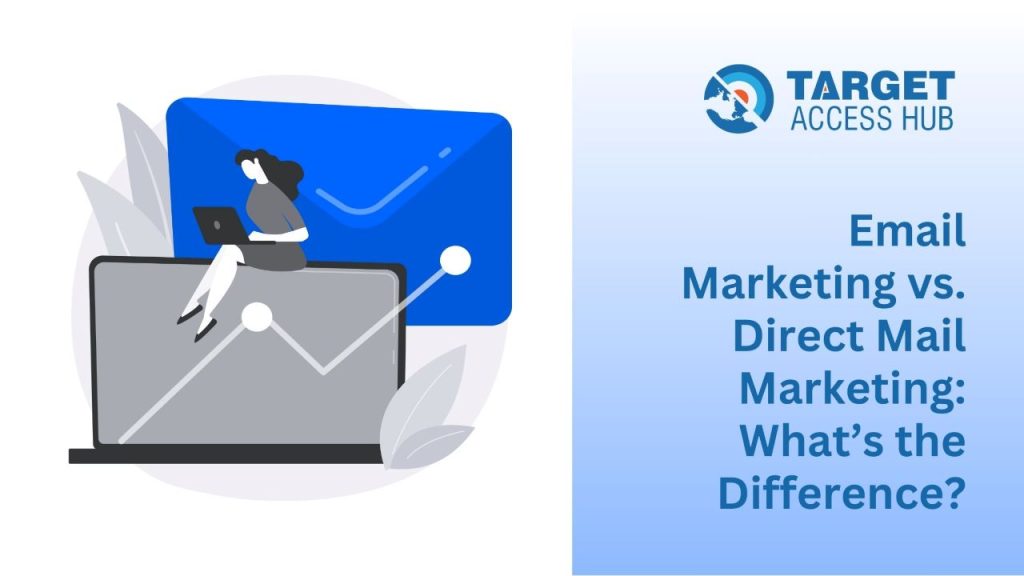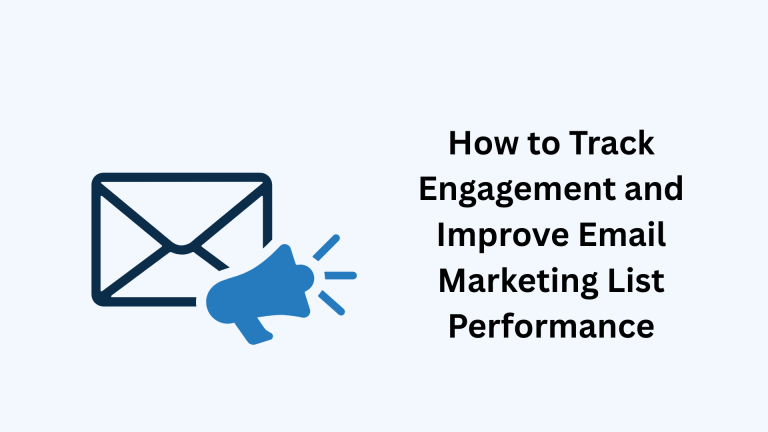Direct Mail vs Email: Which Works Better?

What is Direct Mail?
Direct mail is a part of an extensive marketing strategy. It involves sending personalized mails to potential clients. Where repeated emails can suffer from decreased CTR, direct mail offers an alternative solution to connect with customers. Multiple businesses use direct mail to reach potential clients and increase response rates. In this category of postal mails, businesses mainly send postcards, catalogues, brochures, and letters.
What is Email Marketing?
Email marketing is one of the most used methods by marketing and sales teams to promote products and services. Businesses share promotional messages through email marketing campaigns directed towards selected target audiences. Besides that, email marketing is very cost-effective, and marketers can keep track of all results in real-time.

Email Marketing vs. Direct Mail Marketing: What’s the Difference?
Email marketing and Direct marketing serve the same purpose. However, before comparing both methods, you must first understand the characteristics and benefits in detail. In email marketing, marketers send promotional messages to potential clients in bulk. With the help of email marketing, businesses can check click-through rates, open rates, and campaign performance. Email marketing is cost-effective and the best solution to promote products and services to a vast audience in minutes.
Direct mail focuses on sending tangible messages to clients, such as physical objects. The clients can see and touch the package directly after collecting it from the mailbox. This is one of the most traditional ways to reach out to possible customers. It works best for promoting local businesses to stand out from your competitors, mainly focusing on digital marketing.
Direct Mail vs Email Marketing: Comparing Advantages and Disadvantages
Email marketing and Direct mail are two entirely different approaches to marketing. There are some notable differences when you compare both these strategies side by side. Through email marketing, businesses primarily leverage the internet to deliver messages in bulk. It is quick, effective, and cost-efficient. It analyzes data to create a list of potential clients to make email marketing efforts more effective. Besides that, it enables instant communication with zero printing or postal charges.
However, in direct email marketing, marketers aim to reach clients through physical touch. It usually shares company catalogues, postcards, and brochures through postal services. Besides that, physical mail leaves a long-lasting impression on people, building a particular curiosity among them. The only downside to sending direct mail is the cost that you need to bear. The production, printing, and postal charges can force you to chunk a decent amount from your marketing budget.

How to Measure the Results of Your Email Marketing Campaigns?
If you want to track the progress of your email marketing campaigns, you need to keep an eye on various key metrics. The first and most important thing you must do is check the open rates; this indicates how many people have opened your email. This will help you understand the impact of your subject line. The following key metric is CTR (click-through rate), which indicates how many people have clicked on the links present in your email. If you have a high CTR, it shows that the content in your email is relevant and engaging to the recipients.
It would help if you always kept yourself updated on the conversion rate of your email marketing campaigns. The conversion rate will indicate the ratio of people who acted after receiving your message. This can also happen on different levels; they can download a resource, sign up for any service, make a purchase, and more. Besides that, monitoring the bounce rate throughout your email campaign is essential. You can see if emails are being delivered successfully through the bounce rate metric.
To gain better knowledge about the success of your email marketing campaigns, analyze all the critical metrics through a given period to compare with industry benchmarks. Besides that, you can also use different A/B testing tools to learn which aspects of your email need to be improved. With regular observation of these metrics and selected improvisation of your content, you can improve the results of your email marketing campaigns.
Email vs Direct Mail: What’s the Verdict?
Email marketing and Direct mail are opposites in approaching suitable clients. However, it is essential to observe the response rates as it becomes crucial to optimize outreach strategies. Direct mail is a traditional way of sending physical mail to interested clients or loyal customers. However, it boasts higher response rates than digital emails. According to a study by the Direct Marketing Association, the average response rate for direct mail is 4.4%. It is higher than the 0.12% you might manage through email marketing. One of the significant reasons is physical touch in your approach, as people tend to relate to physical messages more than emails.
Email marketing has its advantages when marketing any product or service. Its main advantage over direct mail is that it is quick, cost-effective, and readily marketable. The response rate for email marketing is meagre, but it will not dent your revenue. Besides that, you can also reach out to people worldwide and not stick with local marketing. You can analyze the issues with your email campaign and improve its real-time performance.
The Benefits of Choosing Email Marketing Over Direct Mail
Today, technology is growing at a rapid pace. This is where email marketing gets the edge over direct mail. From a business point of view, it is cheap, has less time investment, requires minimal workforce, and is easy to track progress. You can direct your revenue to other divisions because you do not need to break the bank to run an email marketing campaign.
The next best thing about email marketing is its ability to deliver data immediately. You can quickly check important metrics such as open rates, click-through rates, and conversions in real-time. This will allow you to change your strategies and deliver better results.
Lastly, you can personalize your emails according to the customers’ needs and promote your product or services in a much simpler way. Besides that, you can calculate data such as product interest, purchase history, preferences, and more to tailor emails to specific criteria. This helps ensure positive customer conversation, which is sometimes more challenging with direct mail.
How Do Response Rates Differ Between Direct Mail and Email Marketing?
Both email marketing and direct mail offer different solutions for promoting products and services to potential clients. Direct mail will give you a higher response rate, which primarily ranks between 1% and 5%, mainly because of its tangible nature. The receiver can physically hold the materials, creating a personal connection between the brand and the customer. Besides that, well-curated designs and well-detailed target mail lists will increase engagement remarkably.
However, you will generally witness fewer response rates in email marketing—the introductory response rate for an email marketing campaign range between 0.1% and 1%. However, email lists are considerably cheaper than direct mail. It is also hassle-free to deliver emails to potential clients. Besides that, email marketing will allow you to make real-time adjustments, customization, and segmentation. These features help to turn possible interested leads into sales conversions.

What Are the Long-Term Benefits of a Well-Executed Direct Mail Campaign?
In the long run, direct mail can be beneficial to any business. Physical mail helps to create a long-lasting impression in clients’ minds. Digital emails are good for communication and quick sales. Still, most people ignore or delete them. Besides that, direct email builds trust, loyalty, and reliability between the brand and the customer. This is because the customer will feel the product in person.
Direct mail marketing campaigns enable businesses to target specific locations and select personnel. Companies can improve their marketing strategies and focus by calculating customer response rates and data. They can also collect all the data to create more customer-engaging mail over time. This selected approach helps to uplift the brand’s image and makes it more likely for clients to engage with the company in the future.
Lastly, the best way to capitalize on direct mail is to use digital channels like customized URLs or QR codes to amplify its impact. Adding to old-fashioned mail, this modern technique will result in quick responses, more engagement, and a comprehensive understanding of client behaviour to increase growth and revenue.




